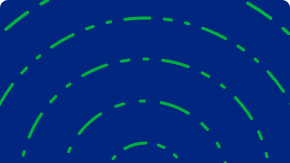As part of the automated provisioning process within identity and access management (IAM), user onboarding automation allows organizations to streamline their assignations and resource access permissions efficiently and without incident. Automated onboarding and offboarding provides new employees, contractors, vendors and partners with what they need to do their job from day one—and removes access on their last day—improving their experience and lightening the load for your HR or IT teams.
User onboarding automation allows your organization to achieve operational excellence with faster workflows, reduced risk, and secure, seamless user-to-resource access.
Benefits of automating user onboarding and offboarding
Reduce error
With technologically supported processes, assigning and removing access permissions becomes significantly more compliant. Automation decreases the possibility of inadvertent access creep (the unmonitored adding of permissions throughout an identity lifecycle) and unauthorized access.
Improve employee experience
Employees exhibit greater alignment with their organization when they have access to proper resources and materials to do their job effectively. Manual onboarding and offboarding can cause delays, negatively affecting employee job performance and new employee satisfaction.
Save time
Like any manual process made automated, this one takes the onus off your teams to individually ensure that every user has the appropriate permissions for their position, and has them removed upon leaving the organization. With these digital tools carrying the load, the organization frees up hours that teams can otherwise devote to other projects.
Save money
User onboarding automation—by helping to improve the employee experience—reduces expenses. Employee turnover can quickly overspend budgets due to repeated hiring and training costs. This is also true of team bandwidths. When team members aren’t putting hours towards manual onboarding and offboarding, they are investing them in other efforts, providing more benefits to the organization.
Currently, there are two common approaches to incorporating this process into existing practice: Legacy and modern.
Legacy onboarding and offboarding approach
Early IAM solutions helped to simplify user onboarding for on-premises resources. However, as the number of cloud-based applications available increased—and the number of unique credentials—so did the need for system customization. There are complexities inherent to customization, with integration issues ranging from user attribute mapping to the overall infrastructure.
This complexity can quickly stretch timelines, with custom coding, configuration, testing, and maintenance required for each new application integration. It can also indirectly encourage users to create their own logins outside of IT purview.
Modern approach to onboarding and offboarding
Advances within provisioning, like pre-built integration, have helped to simplify the user onboarding automation process—effectively freeing up time otherwise allocated to customization. This approach centralizes digital identities into a cloud-based directory for secure access management that’s seamlessly compatible with all organizational resources and tools (as is user-permitted).
This centralization helps IT teams monitor user permissions with greater control. Since the IT team may only remove permissions known to belong to a given user, access creep presents a risk after offboarding an employee. However, the modern approach includes the automated removal of unnecessary permissions, preventing access creep, and further proving that the core is crucial.
SailPoint automated user onboarding and offboarding
With SailPoint automated provisioning built-into our identity management solutions, you can make your onboarding and offboarding processes more intuitive and compliant. Find out how user onboarding automation can serve your organization.
You might also be interested in:
Unleash the power of unified identity security
Mitigate cyber risk across the spectrum of access


